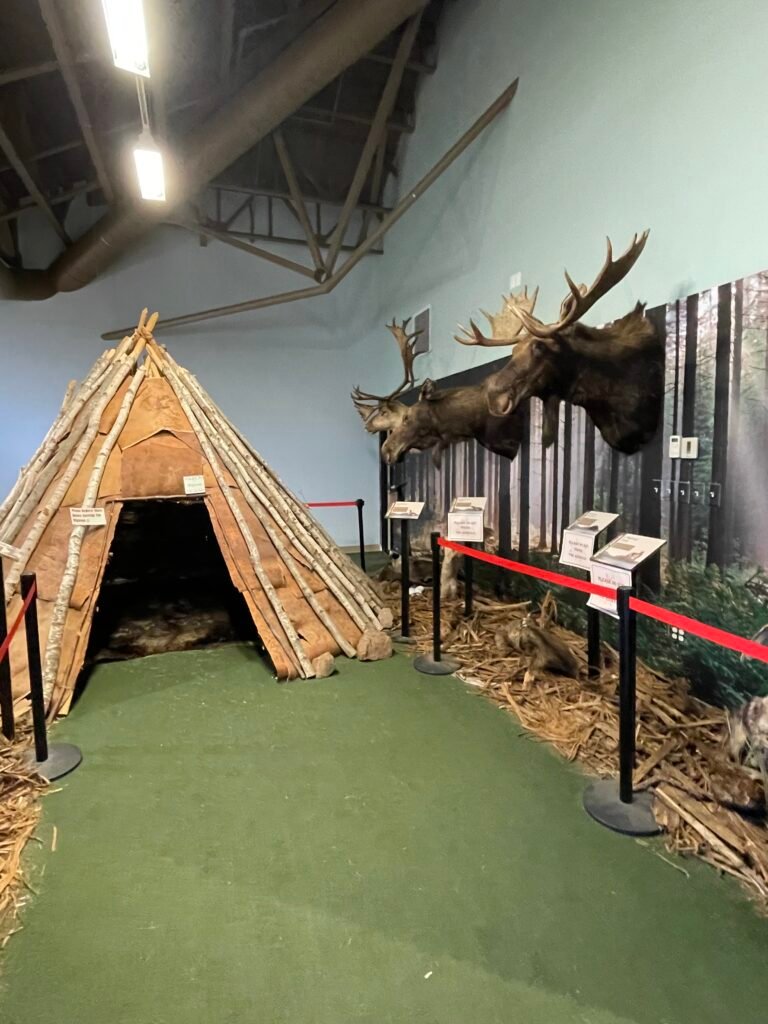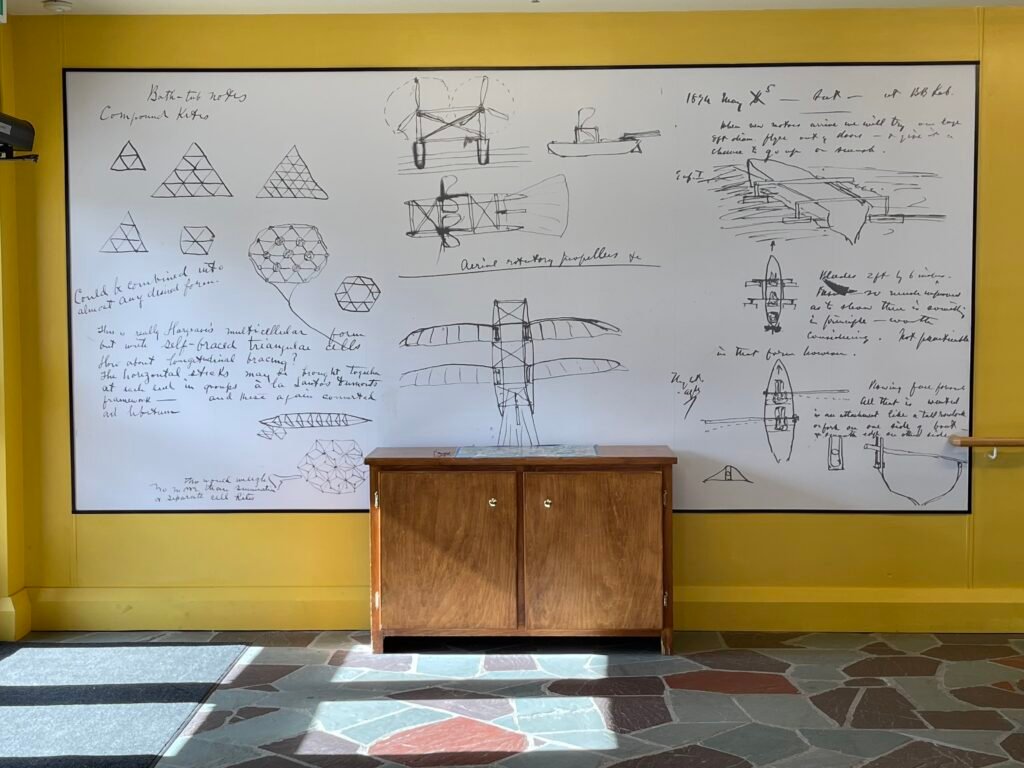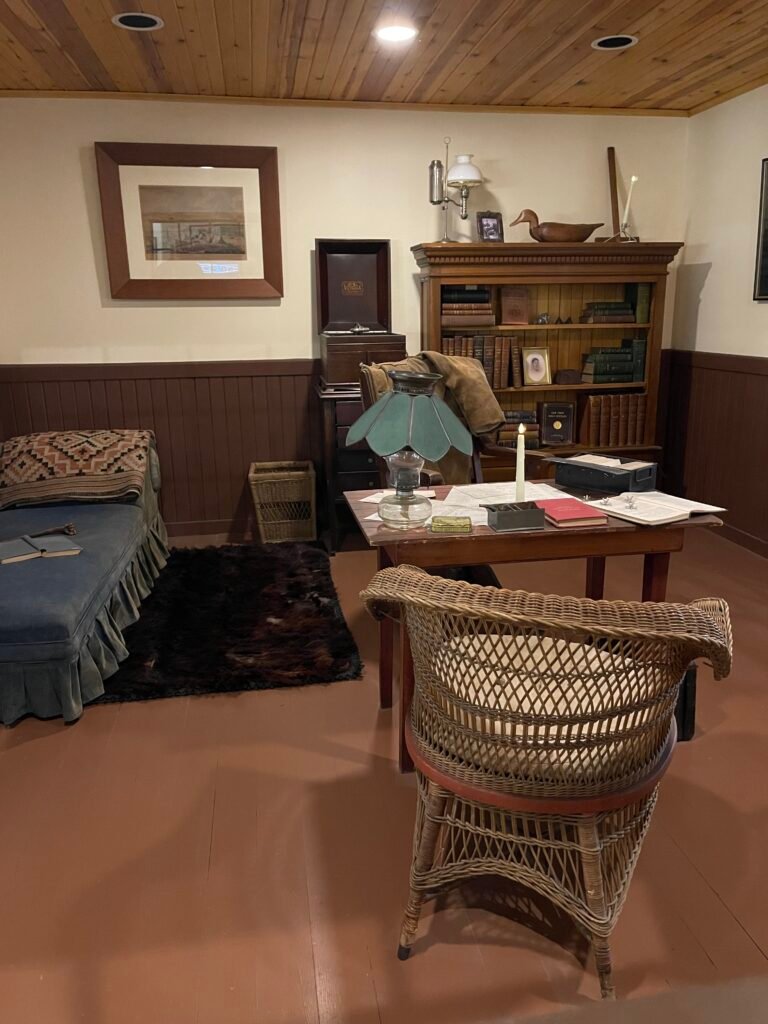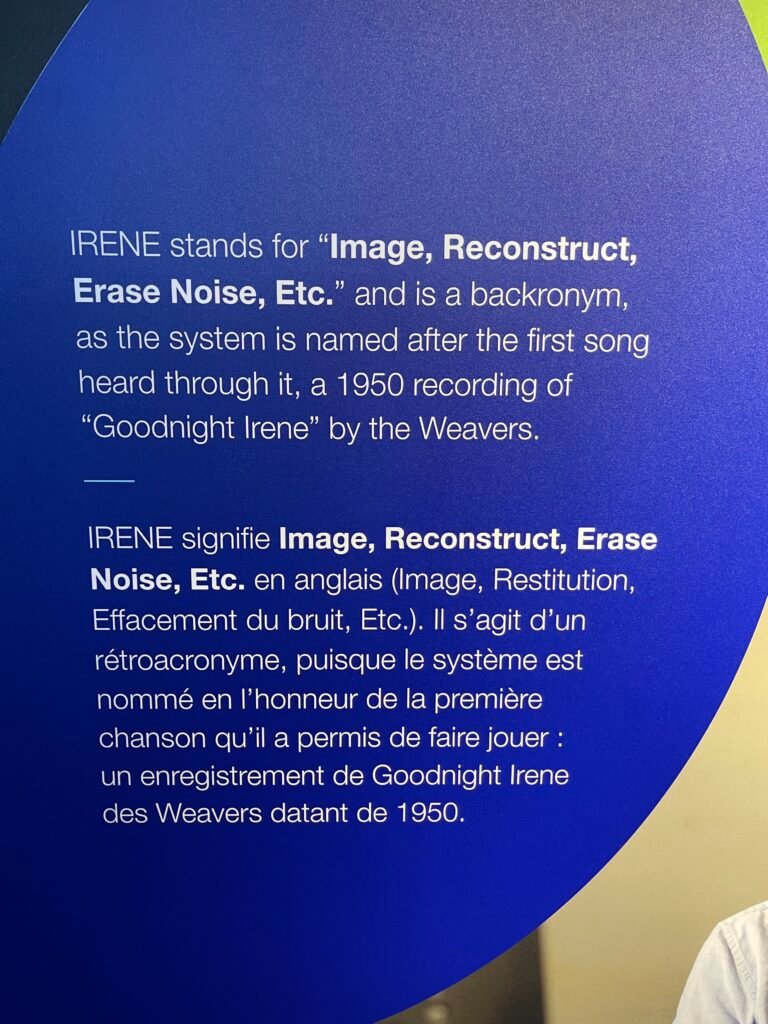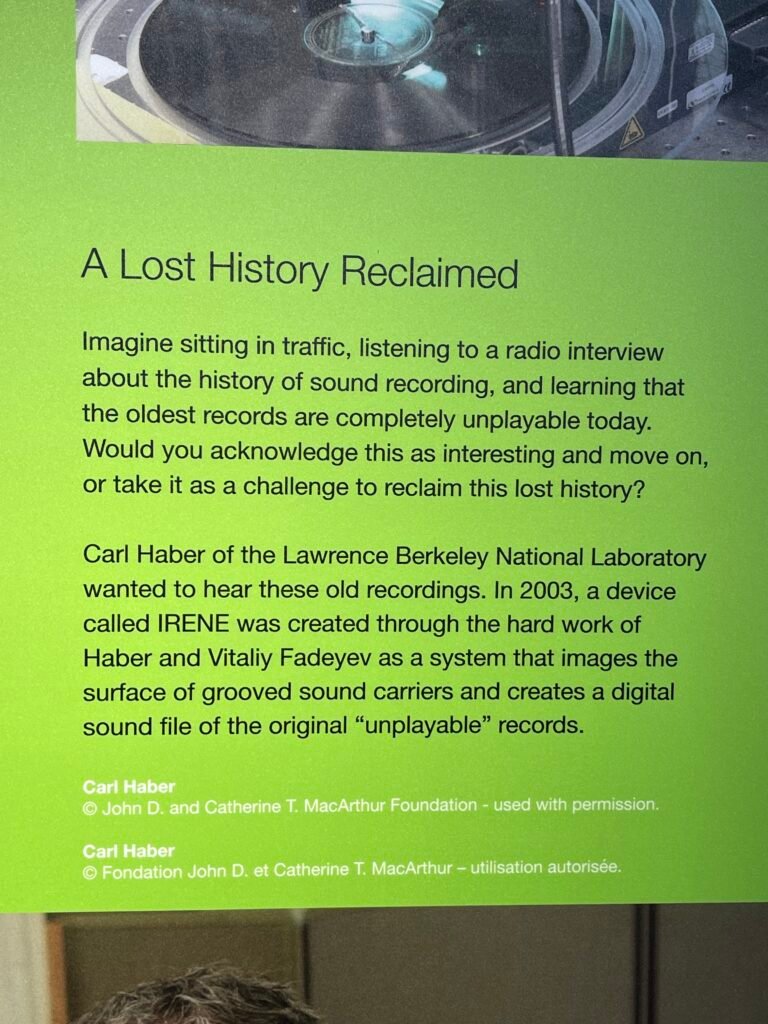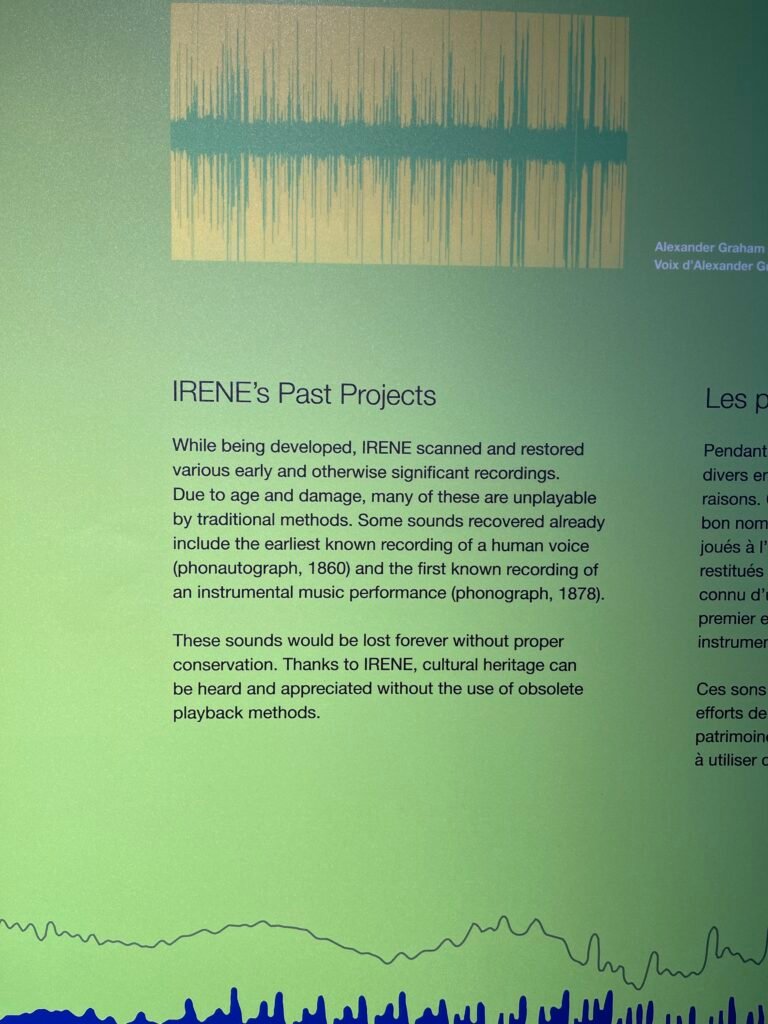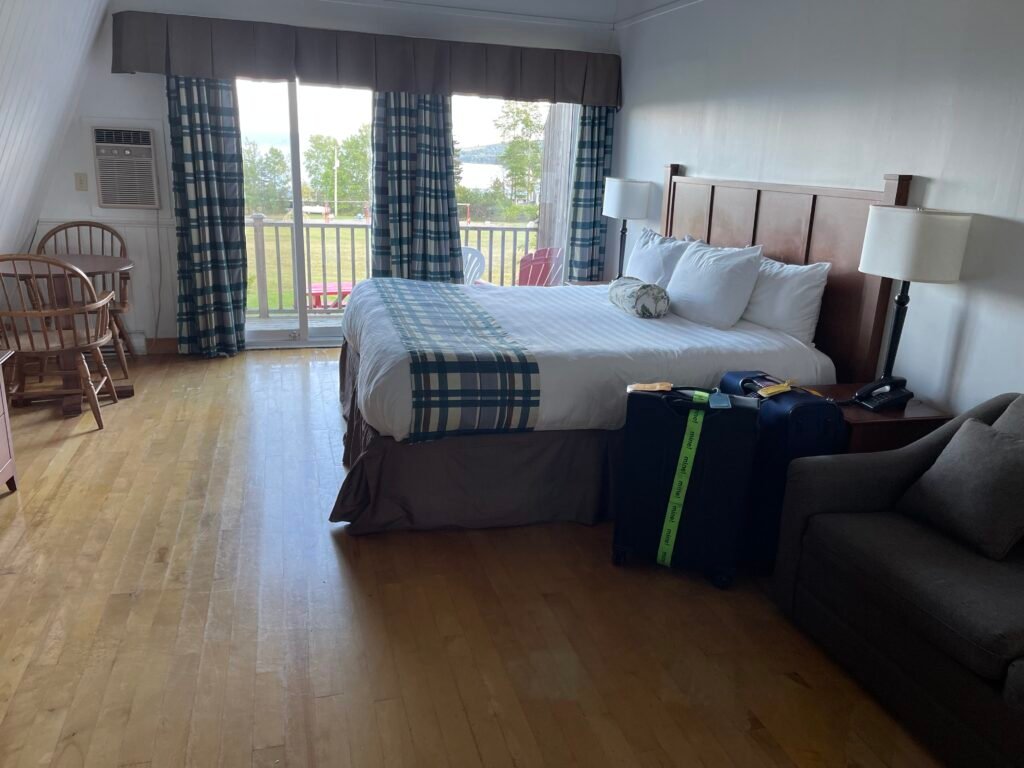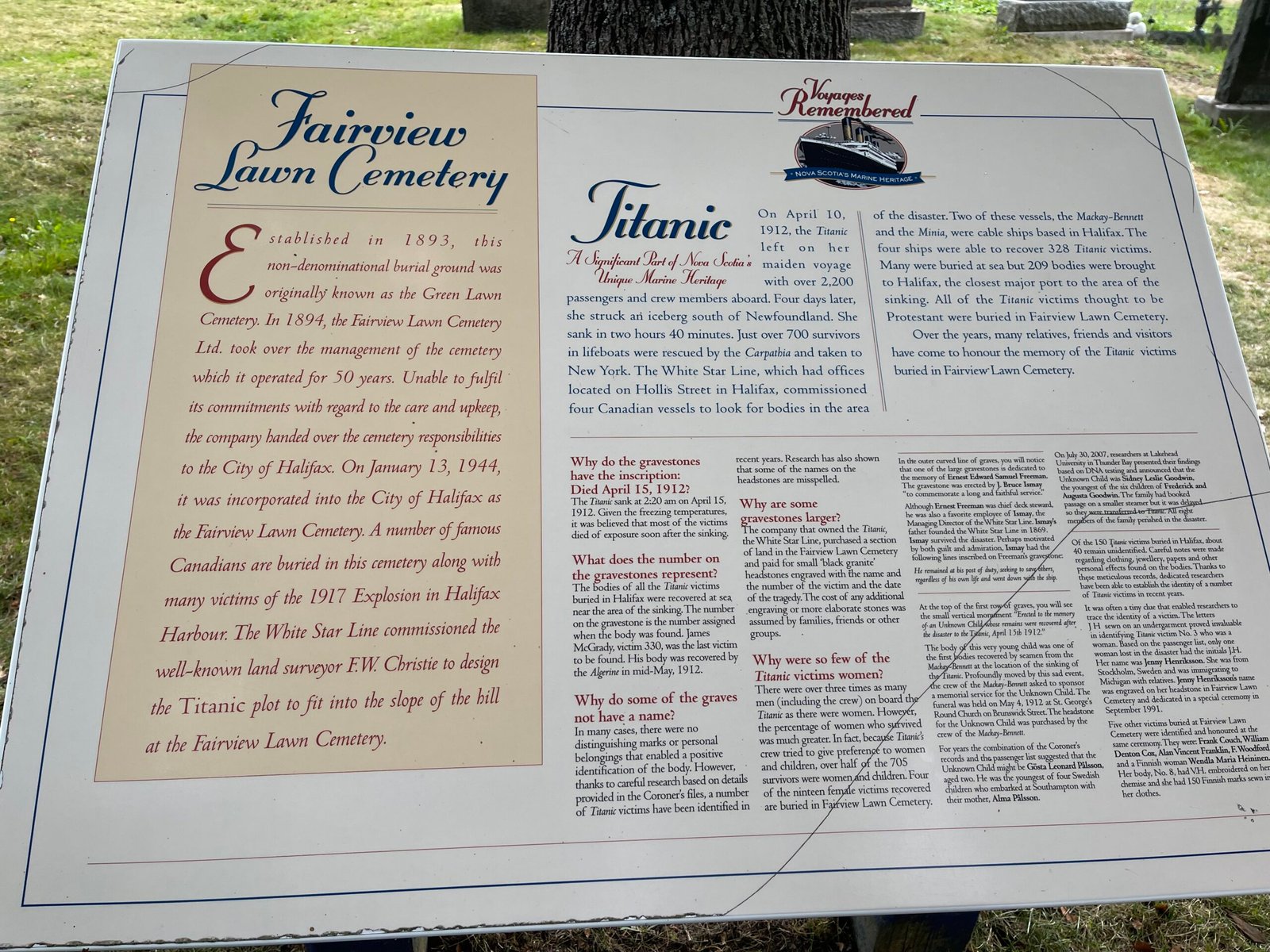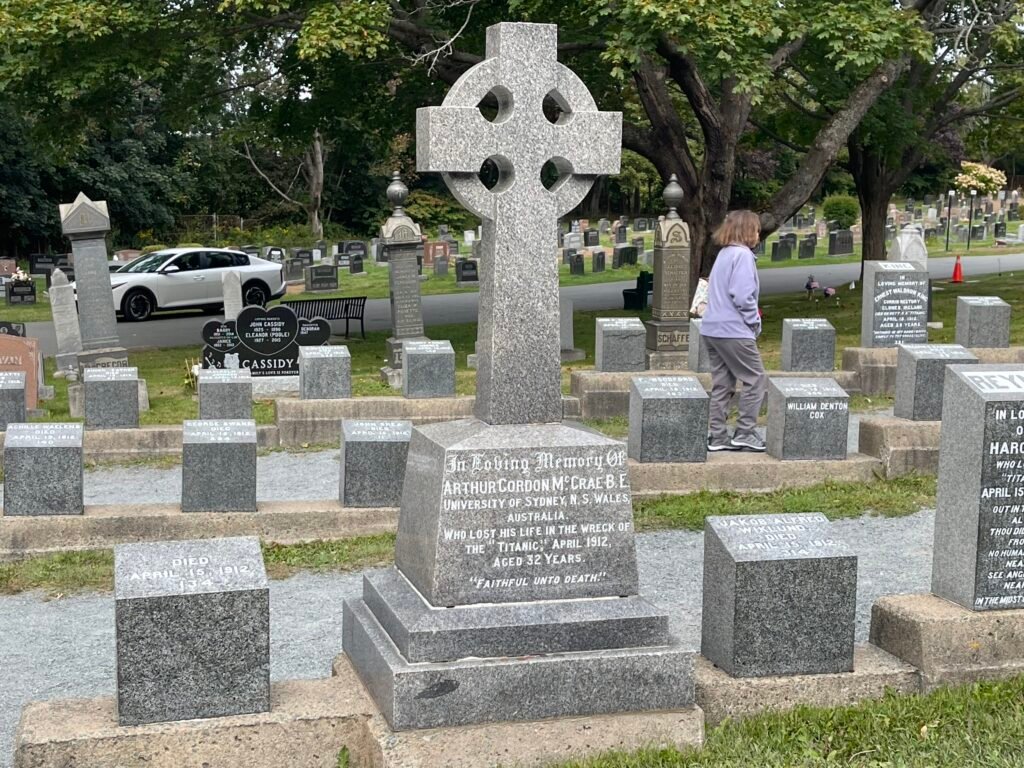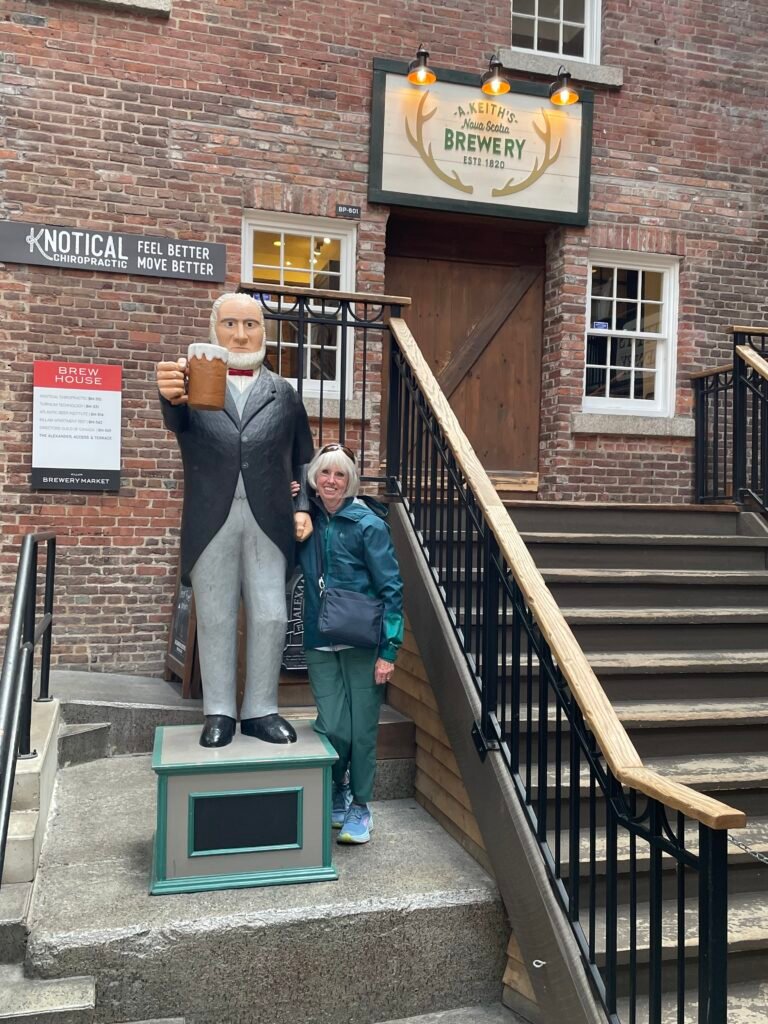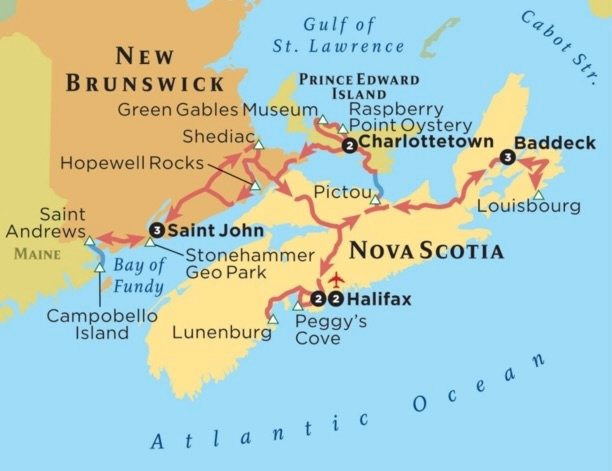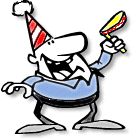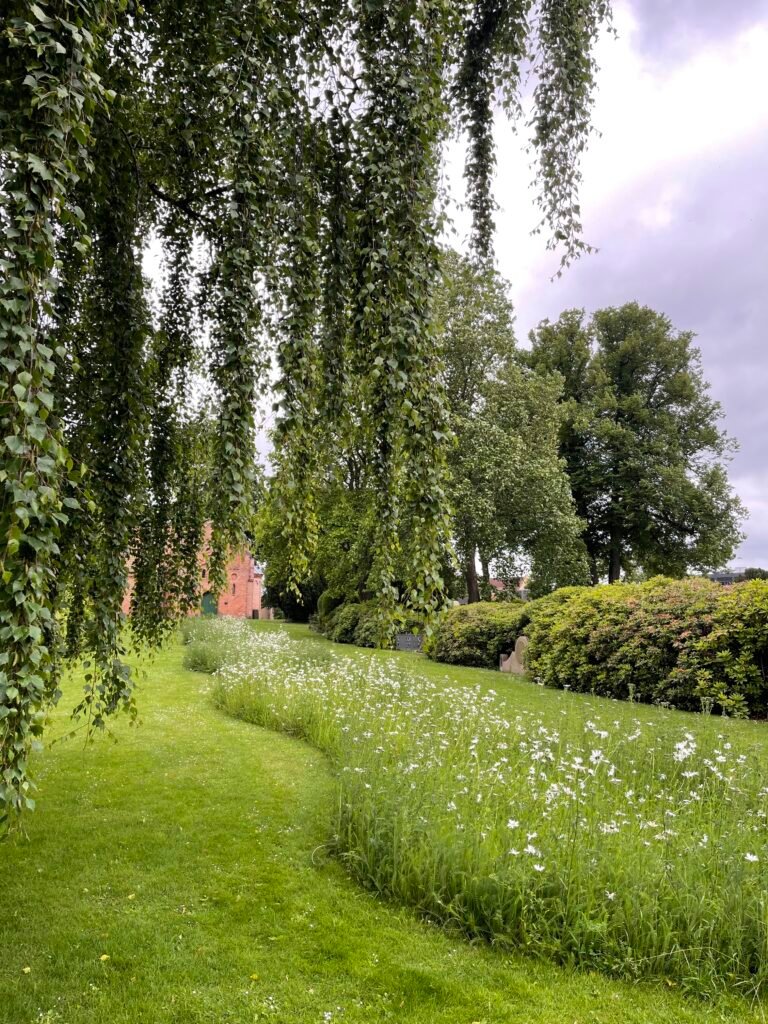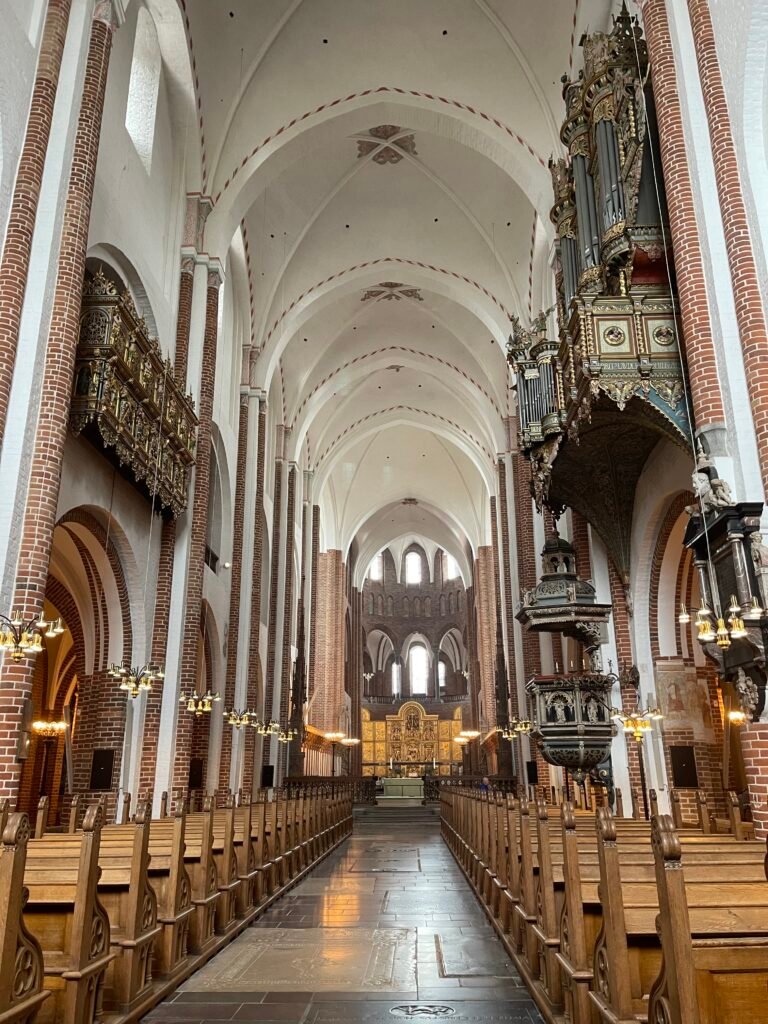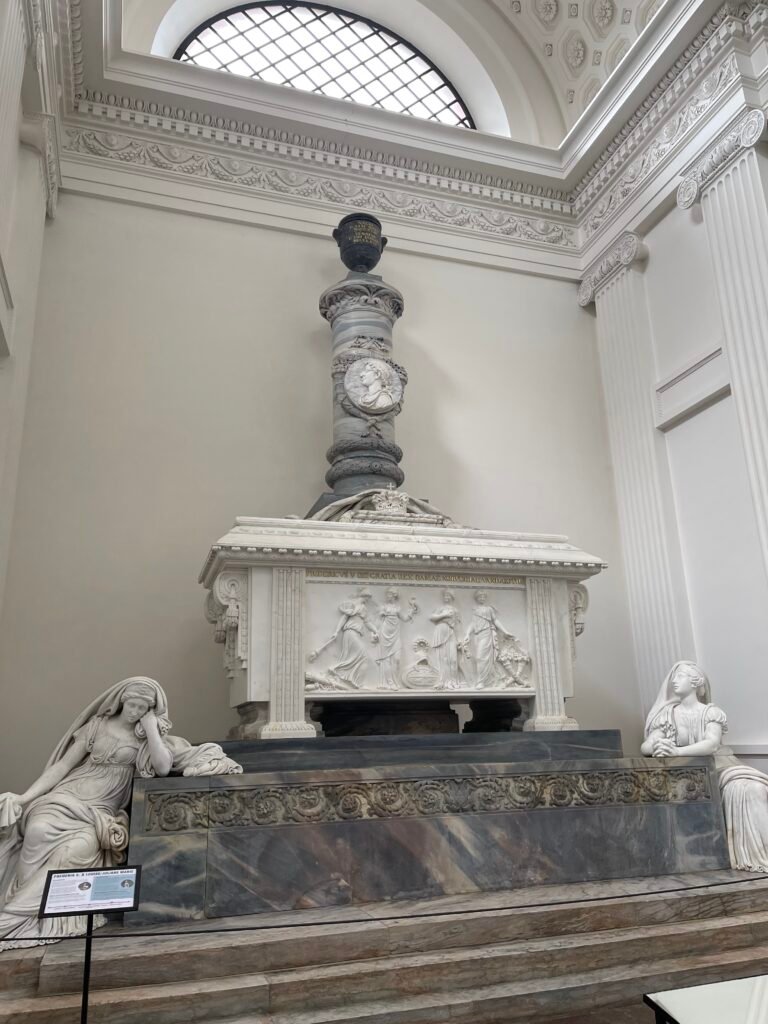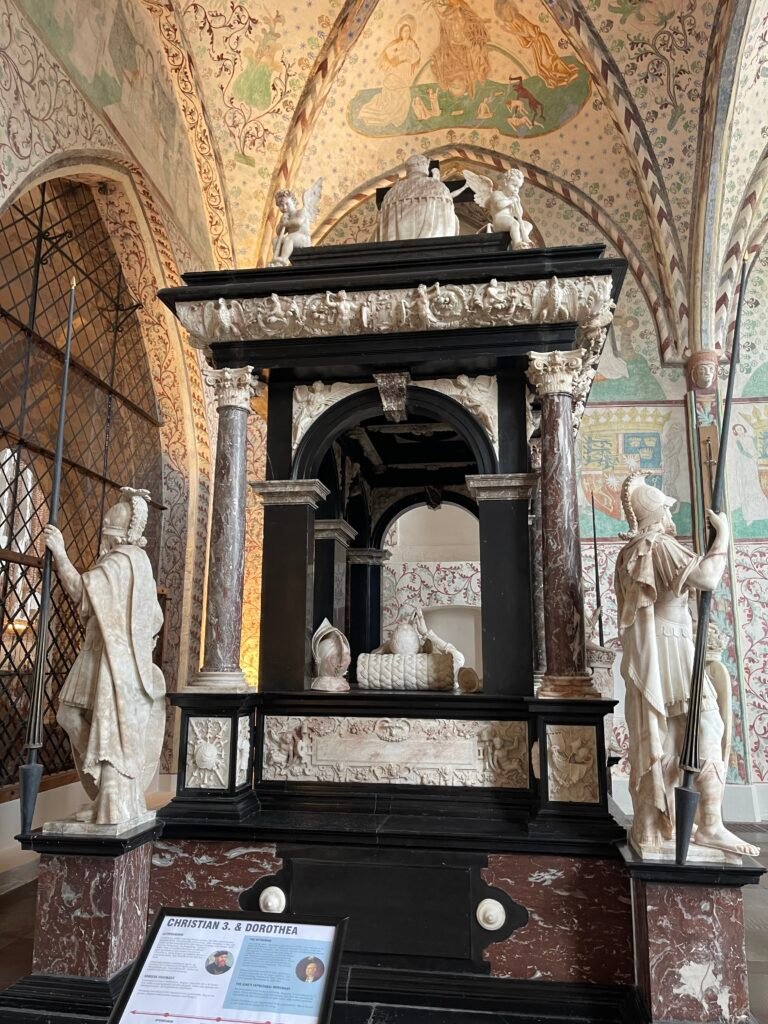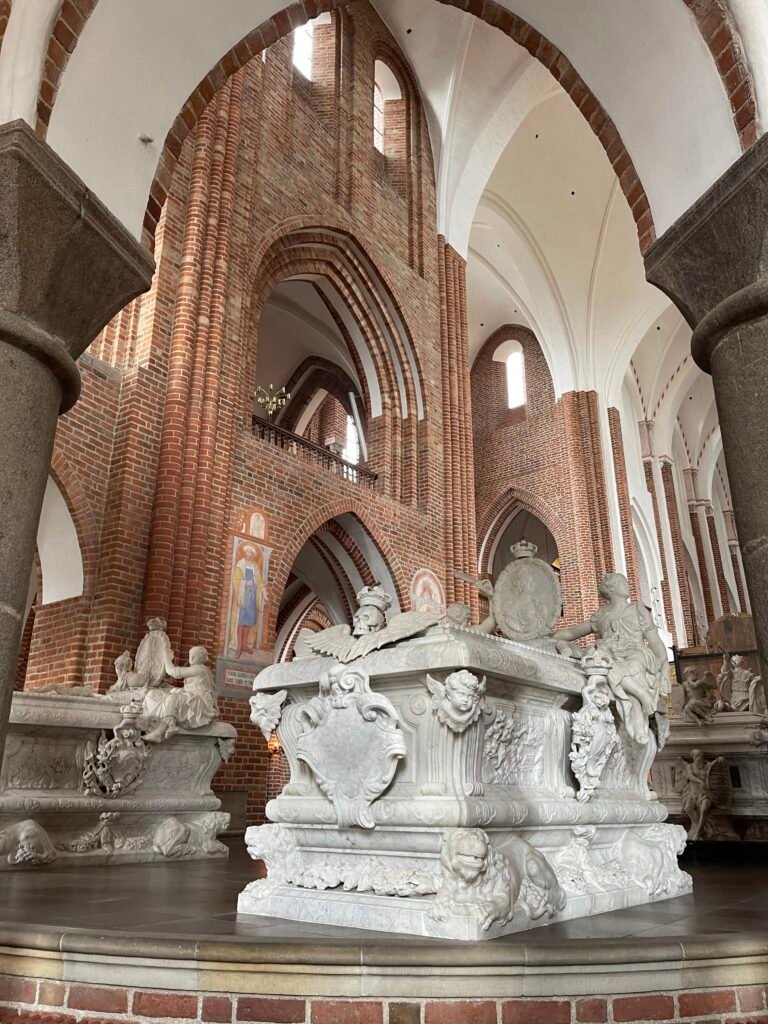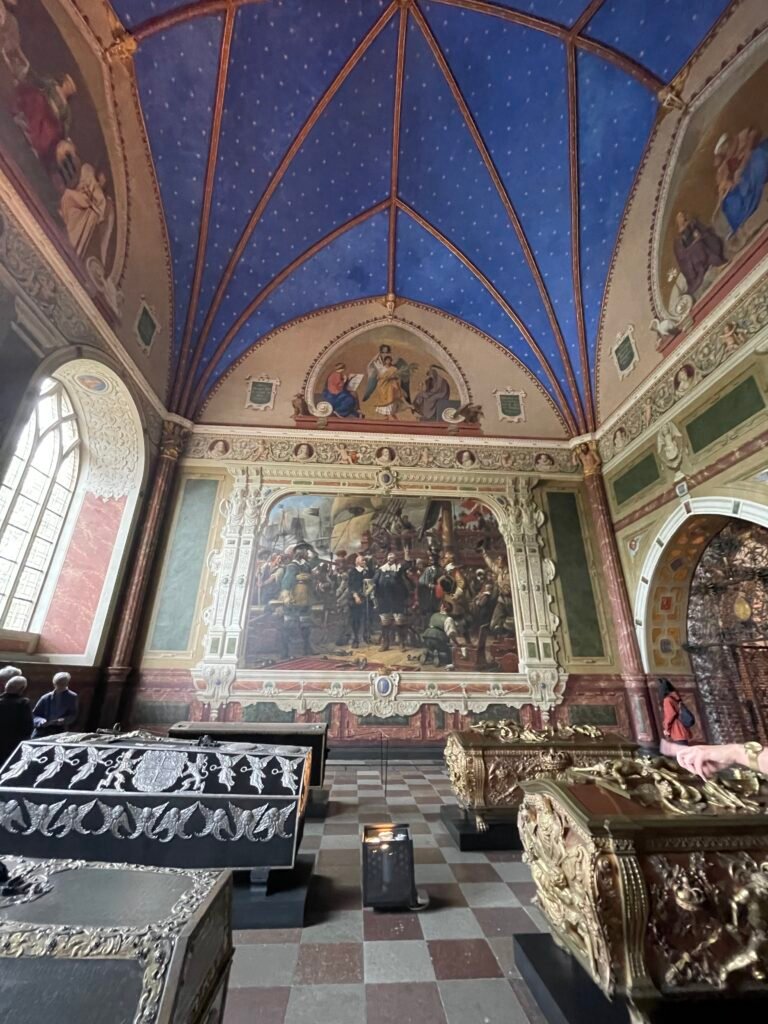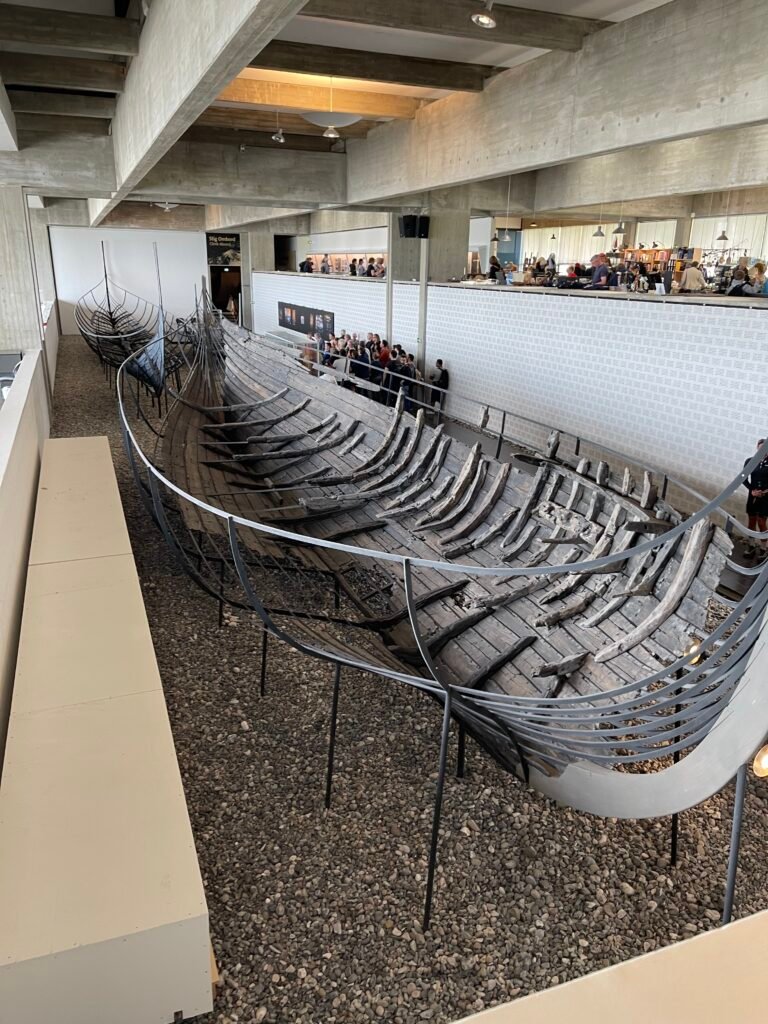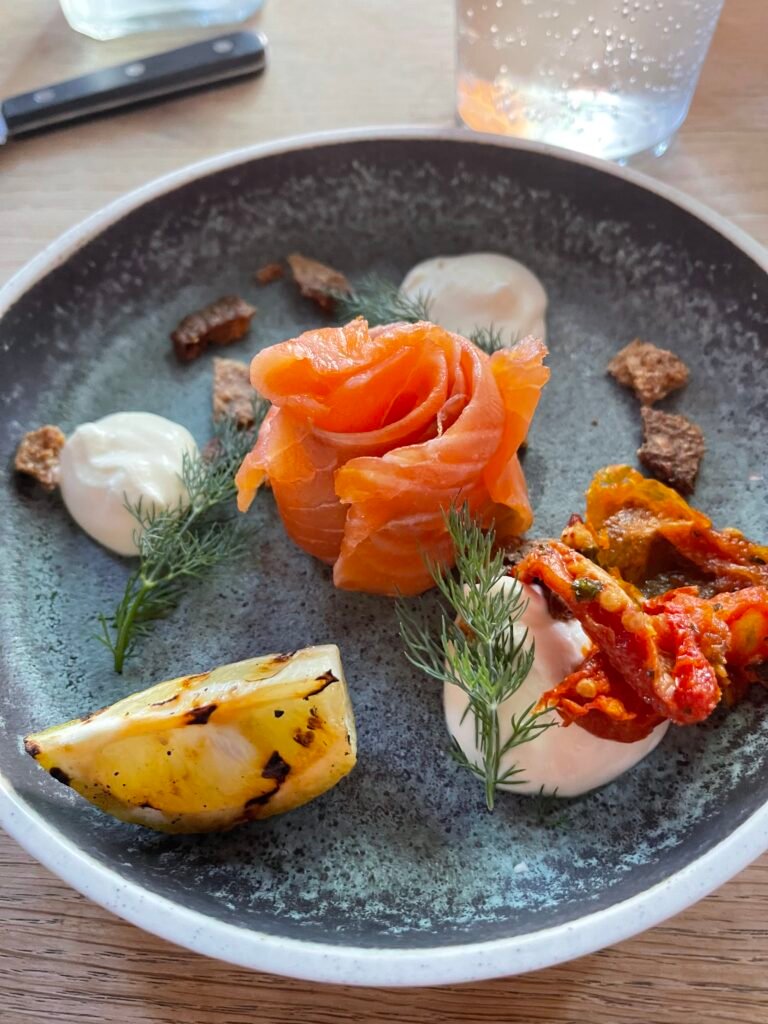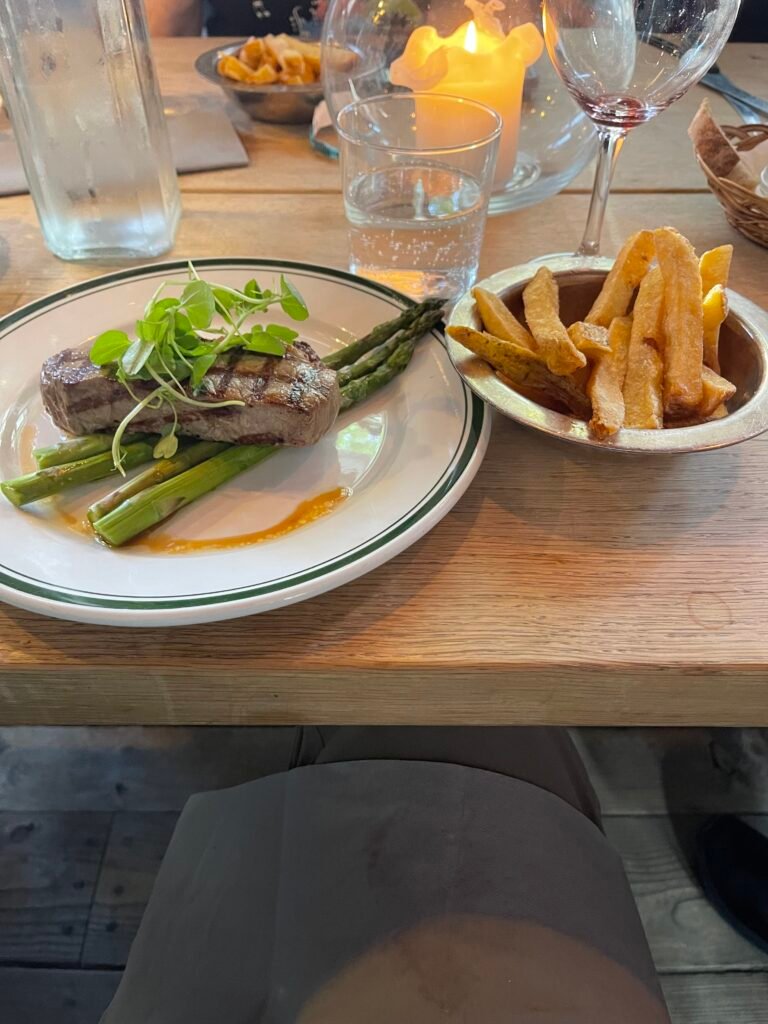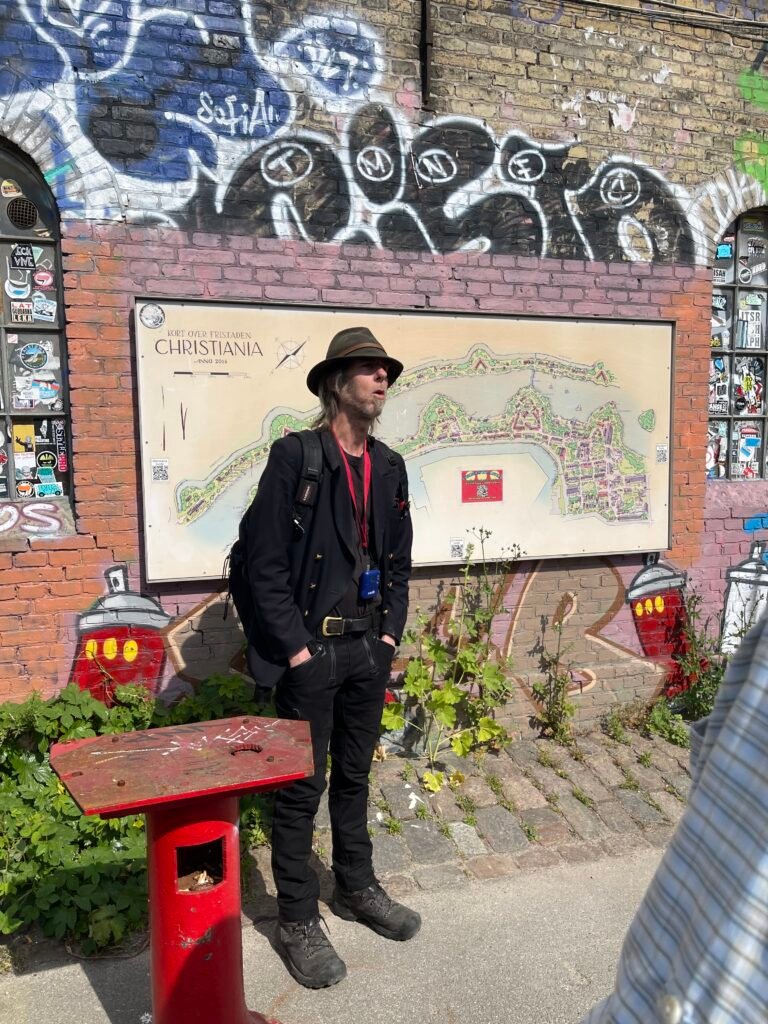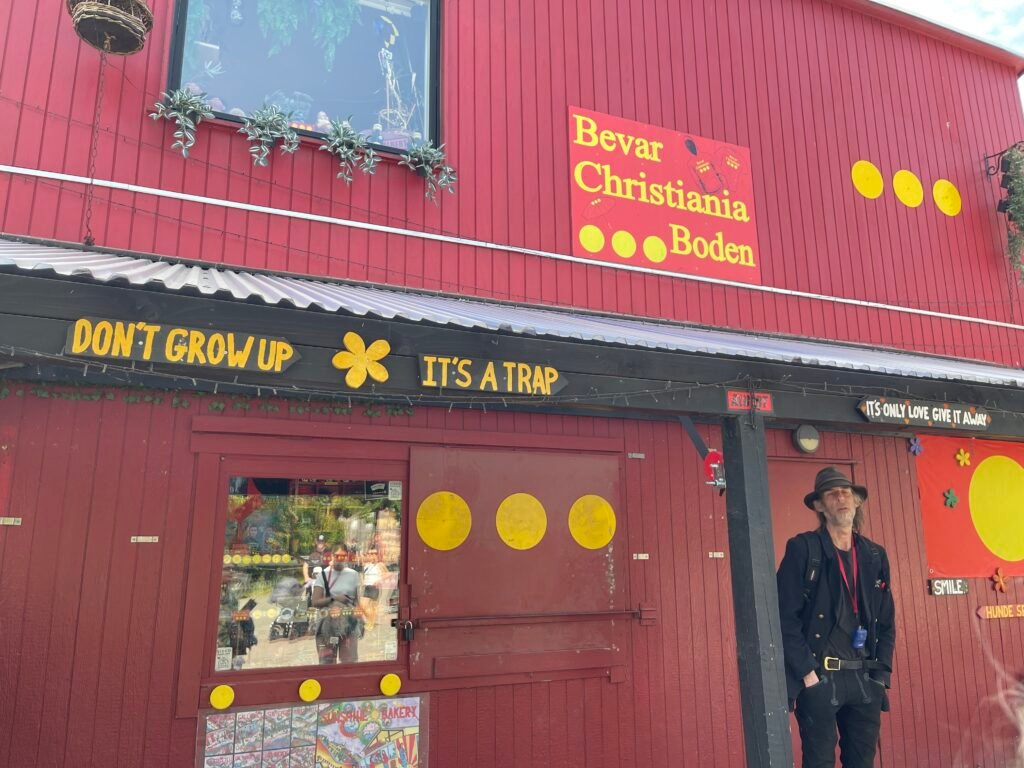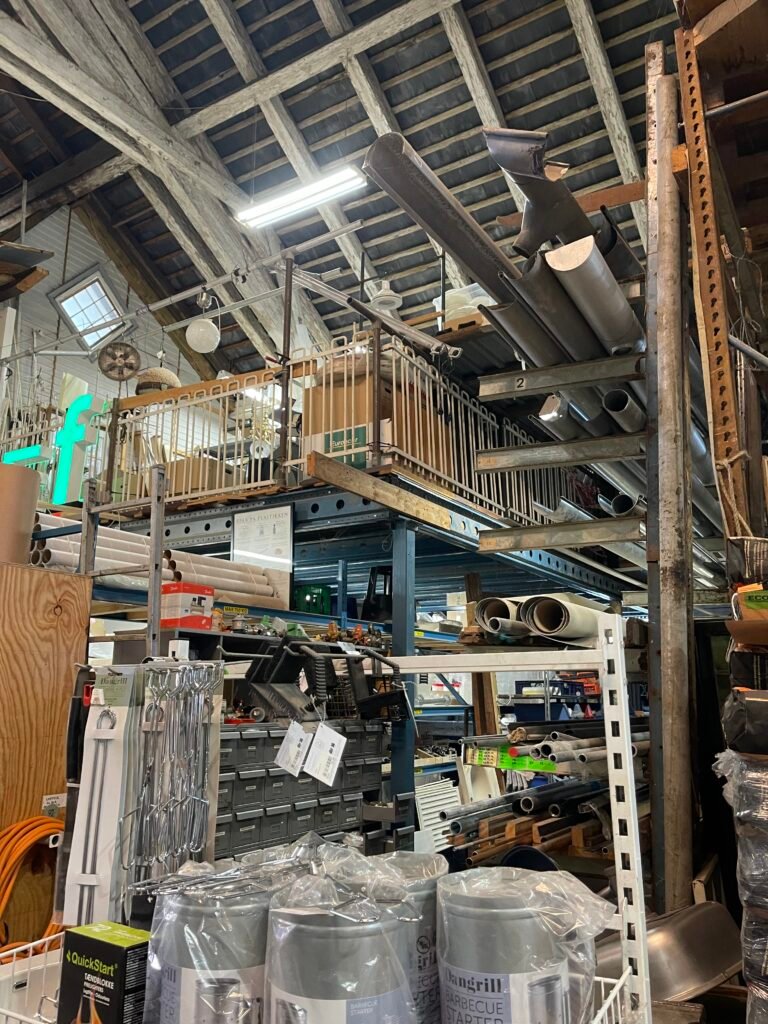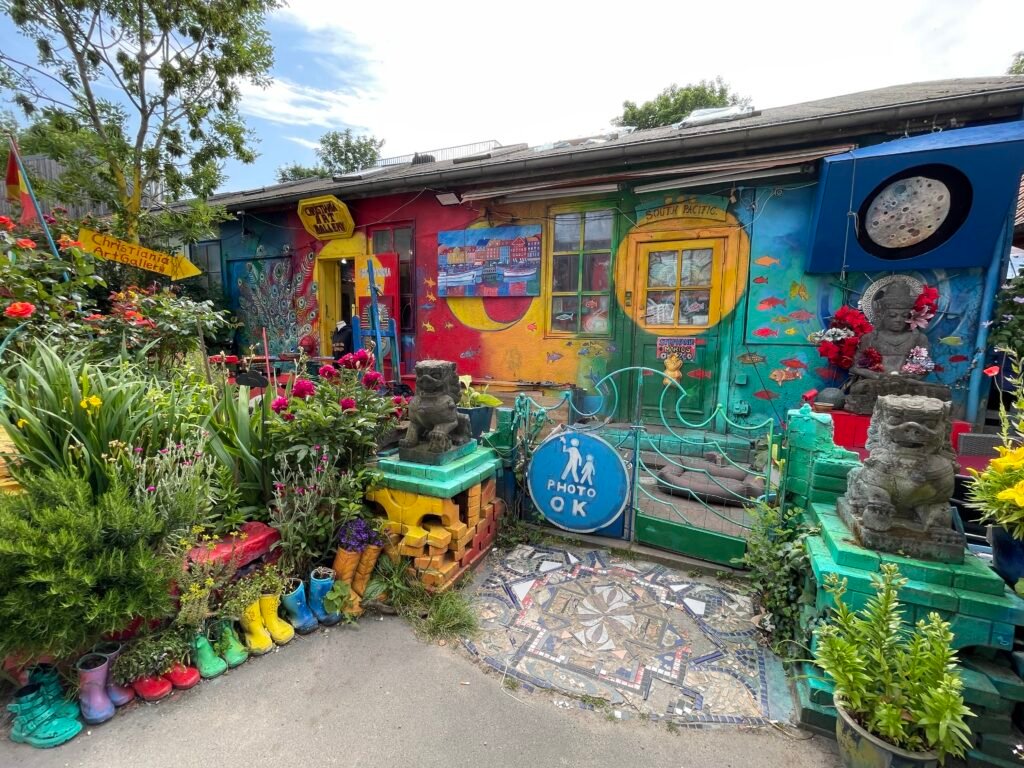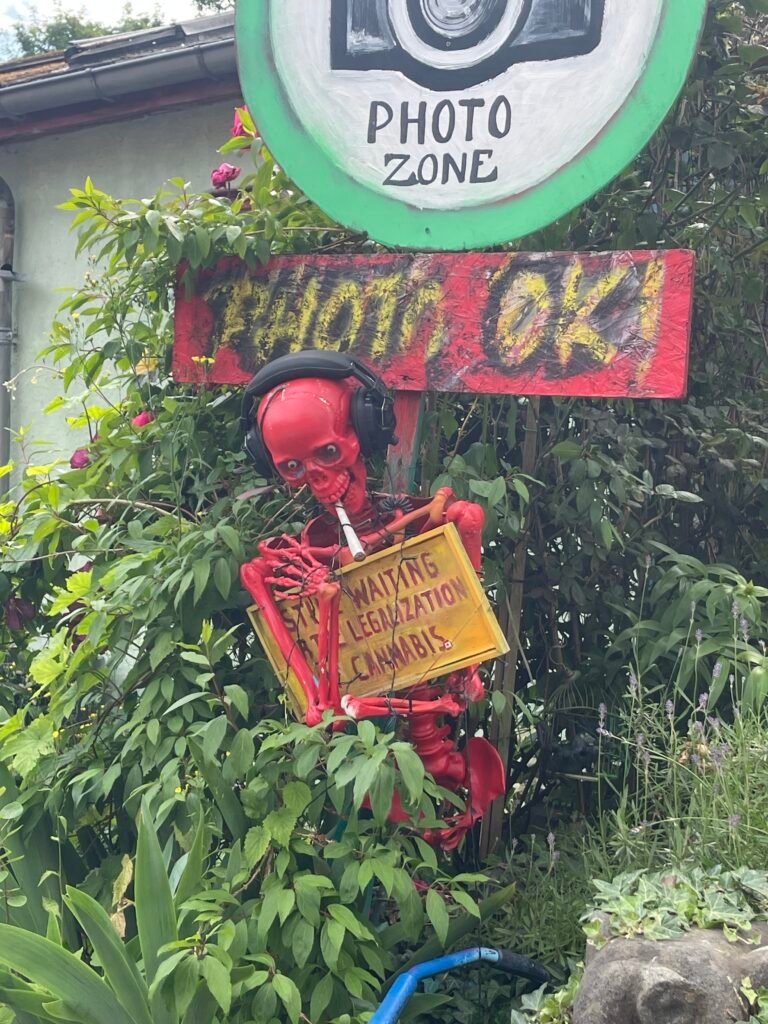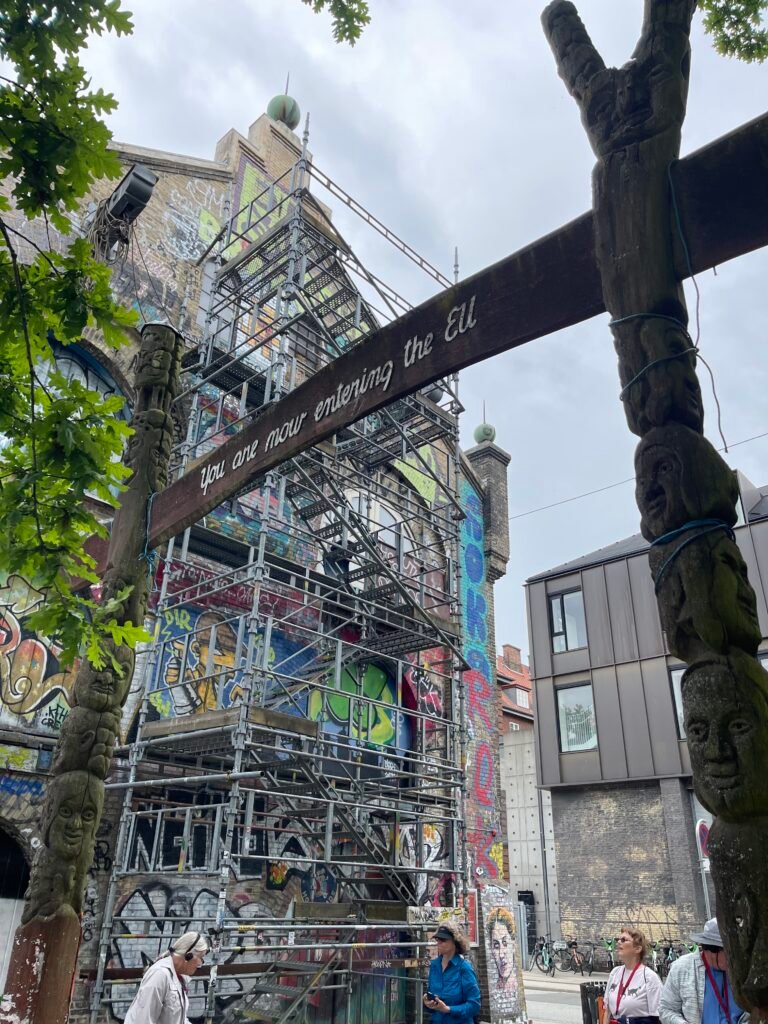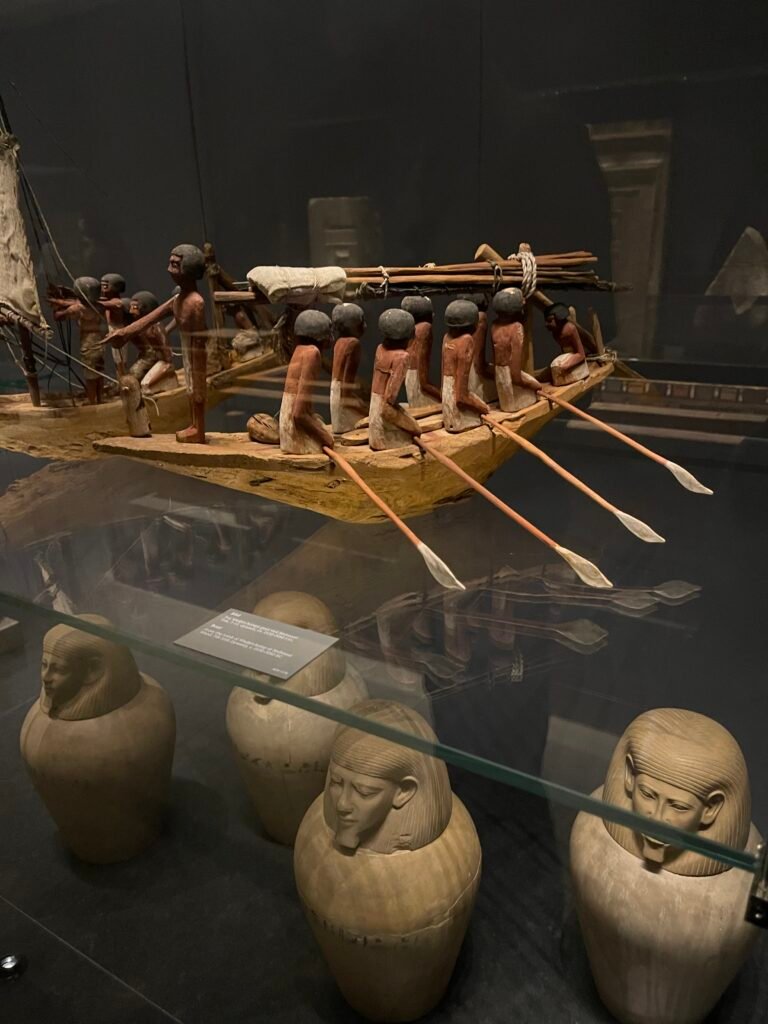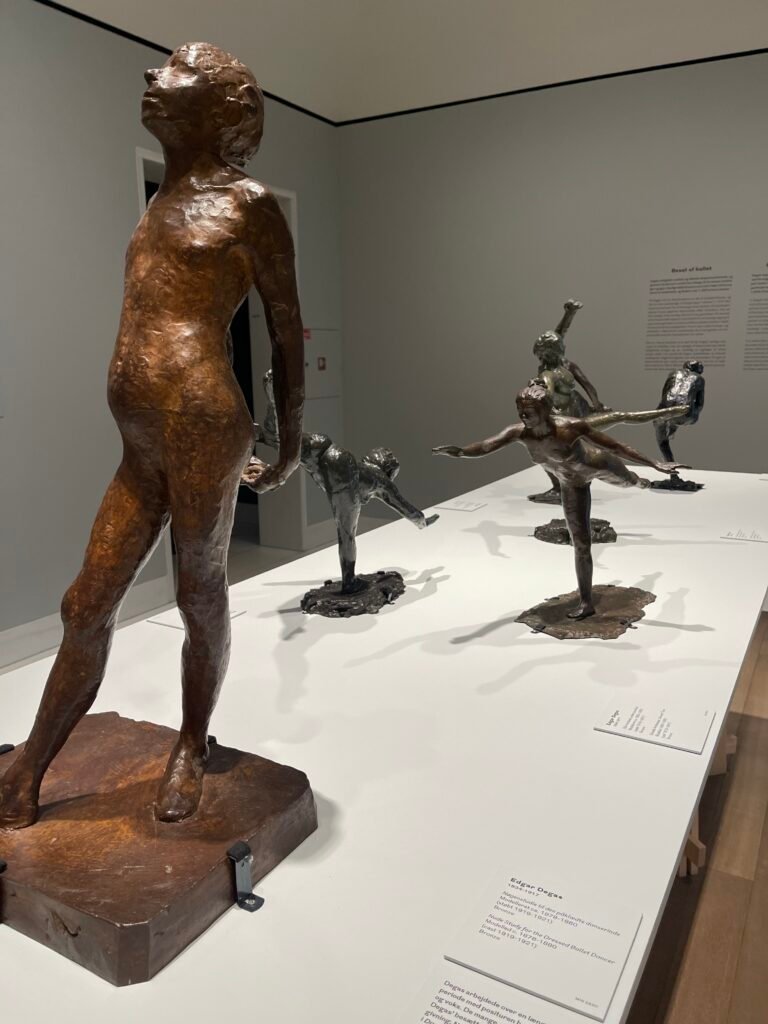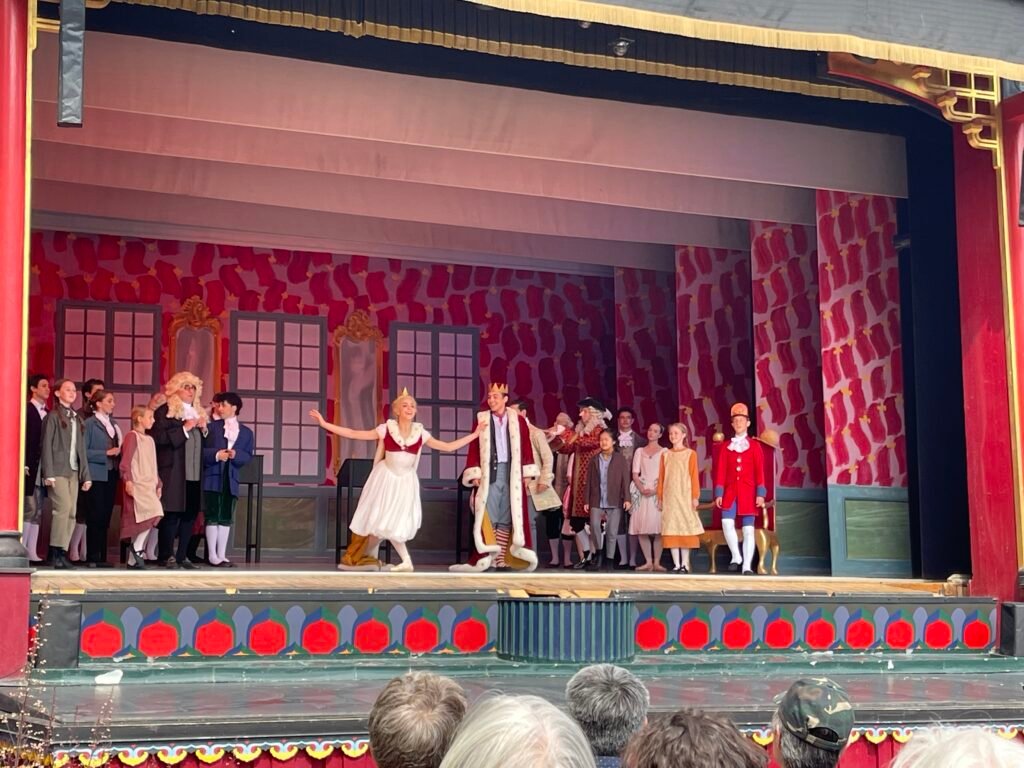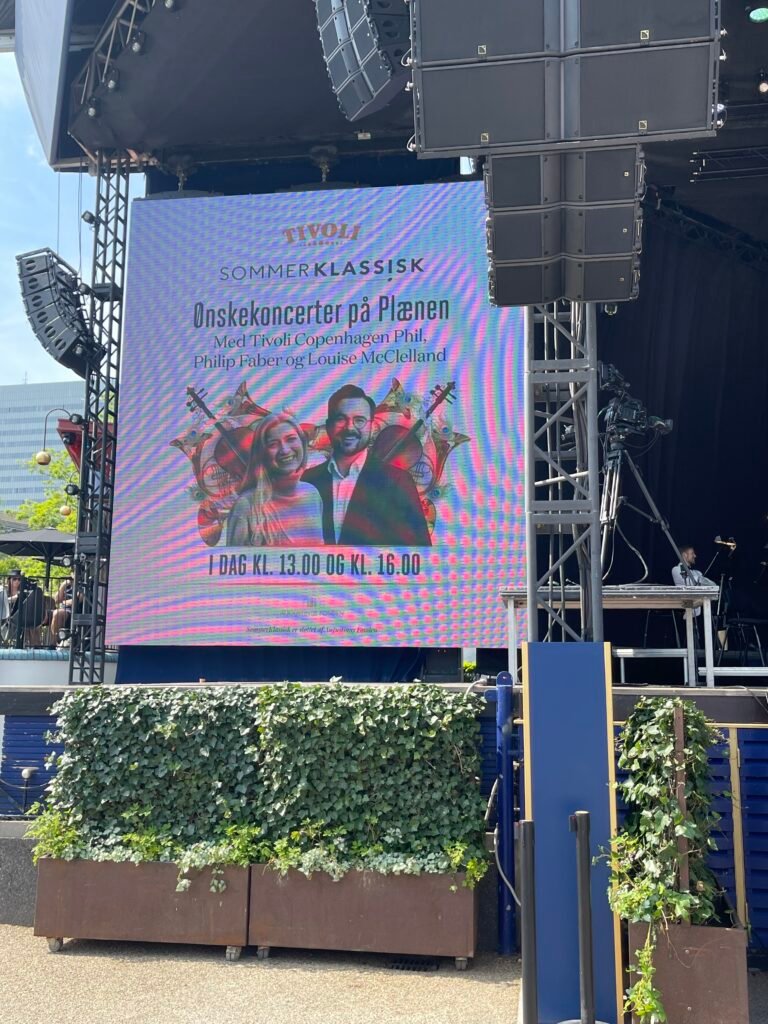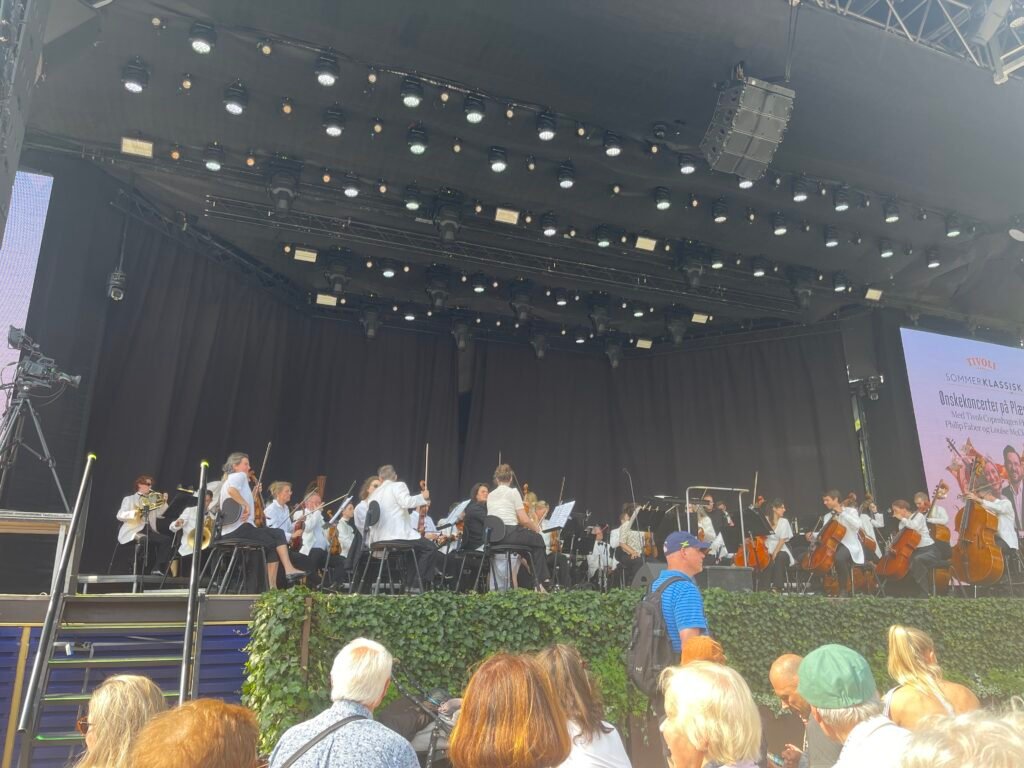After a nice buffet breakfast, we boarded the bus and explored the Cabot Trail. This is a scenic highway with breathtaking coastal and mountain views. It meanders through the Cape Breton Highlands National Park and is considered one of the most beautiful scenic highway in Nova Scotia. Along the way, we stopped at a few of the overlooks to take in the seaside splendor.
We passed through seaside villages and enjoyed seeing the quaint homes tucked into either the mountain or dotted along the shore. The trail is named for John Cabot, the Italian-born seafarer (who sailed for Great Britain), and who arrived at Cape Breton Island in 1497.
Our first stop along the trail was a visit to St. Peter’s Church. This majestic Catholic church is a major landmark along the trail and was erected under the guidance of Father Pierre Fiset in the early 1890s. It features beautiful frescoes and a very large, ornate altar. The stained glass windows to me, however, seemed out of place with the rest of the elaborate frescoes, as they were more modern looking than I thought should have been featured in the church.
The church was built in 1893, and a silver spire shoots into the sky, that is visible from miles away. Interestingly, the sandstone was quarried in nearby Chéticamp Island and was hauled across the frozen harbor.
After visiting the church, we drove to Les Trois Pignons, which houses the Museum of the Hooked Rug and Home Life, an Acadian, cultural, genealogical and visitor information center. The gallery features original antiques, of which 90% were amassed by Marguerite Gallant, who is remembered as a woman “brave enough to go her own way, to dress as she wished, and to live life to the fullest”.
The museum also features the works of Elizabeth LeFort. Elizabeth was a Canadian tapestry artist, known for replicating photographs, including portraits, in hooked rugs. Other artists’ works are also displayed in the museum. The works are beautiful and it was amazing to see this technique and appreciate the work that goes into each work of art.
We had a box lunch in the park and then continued on our drive back to our chalet, seeing more of the seaside. Our guide during the tour, Trish, was entertaining and told us a lot of history about the area as well as about her own life.
Rain threatened and then broke through while we were on the bus, but stopped each time we disembarked so we were lucky.
Allan and I decided to stay at the lodge for dinner, enjoying a salmon dinner, and then it was back to our chalet for the night.

Sunrise this morning
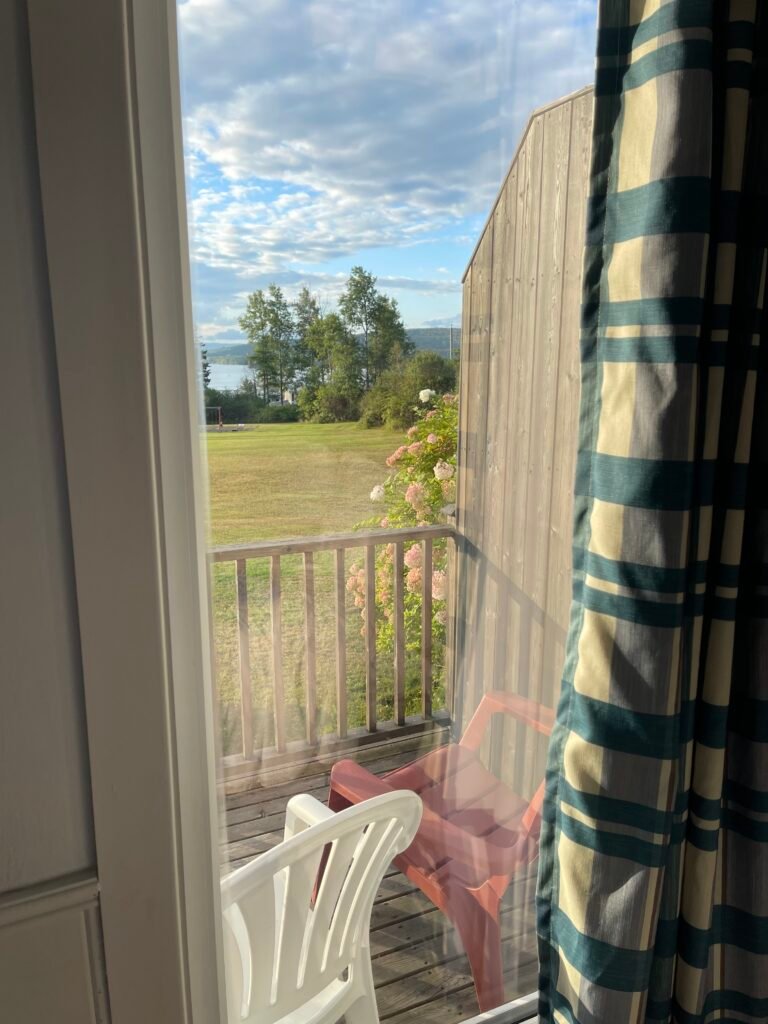
View from our room
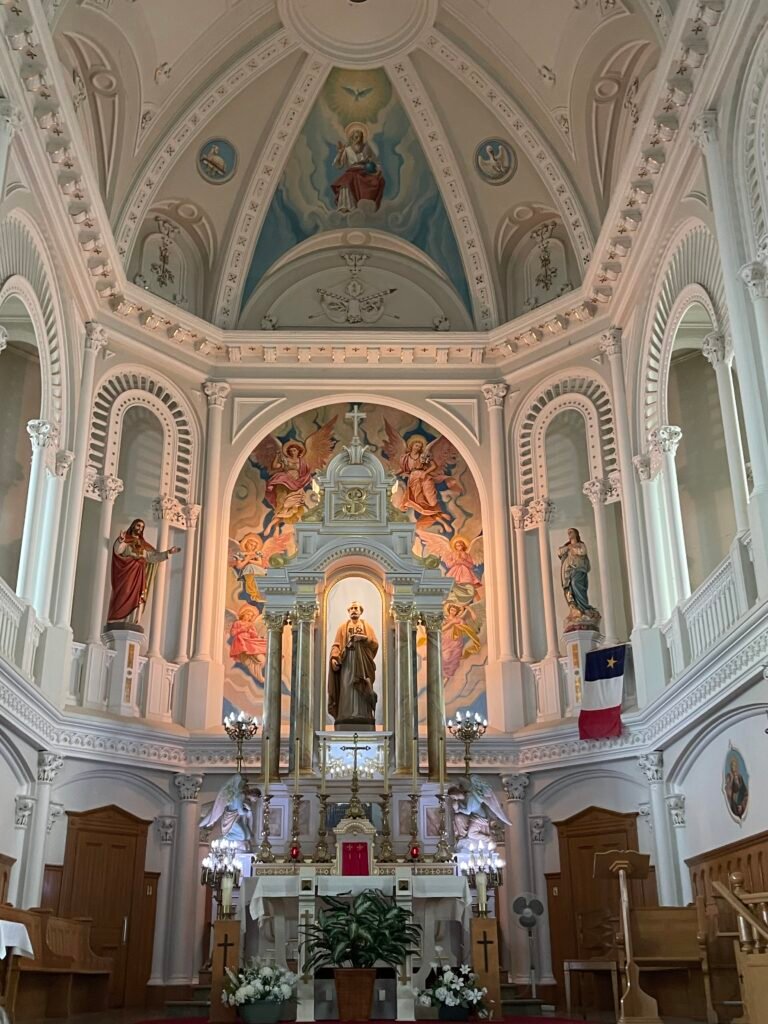
St. Peter’s Church.
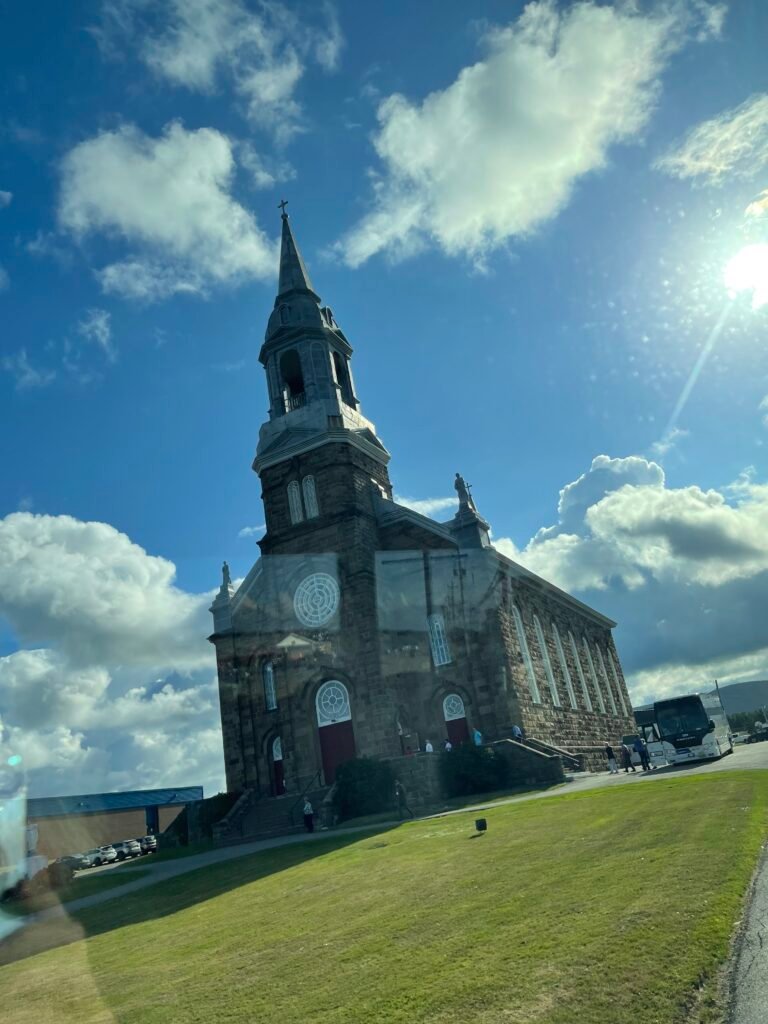
St Peter’s Church
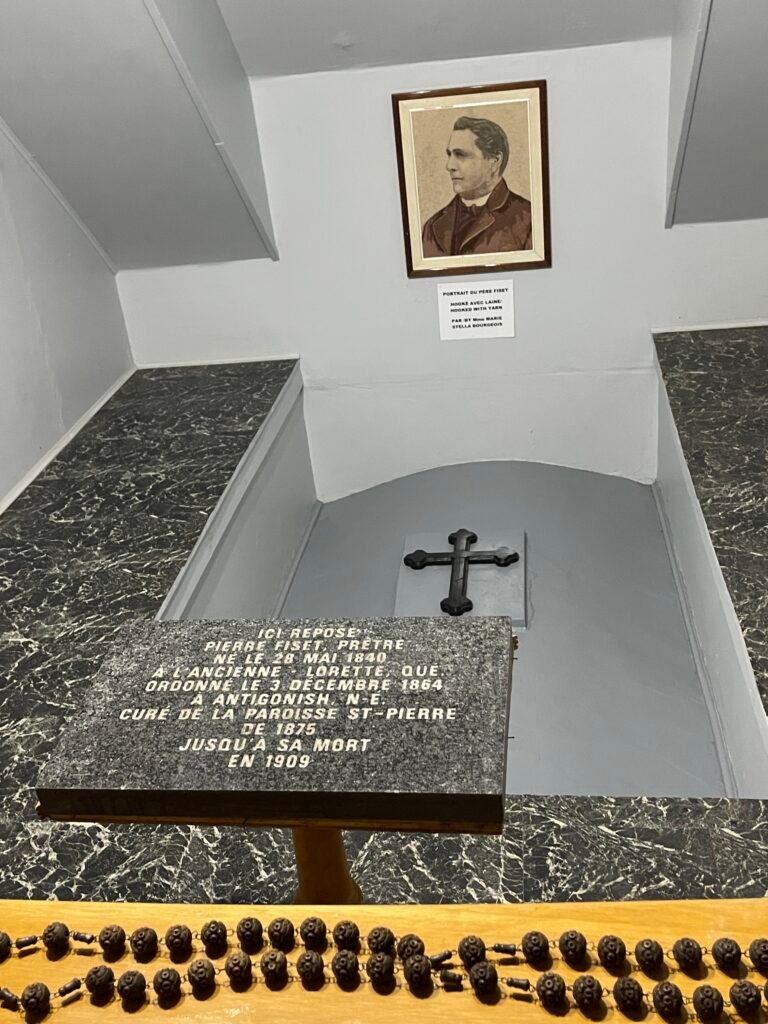
Father Pierre Fiset tomb in the church
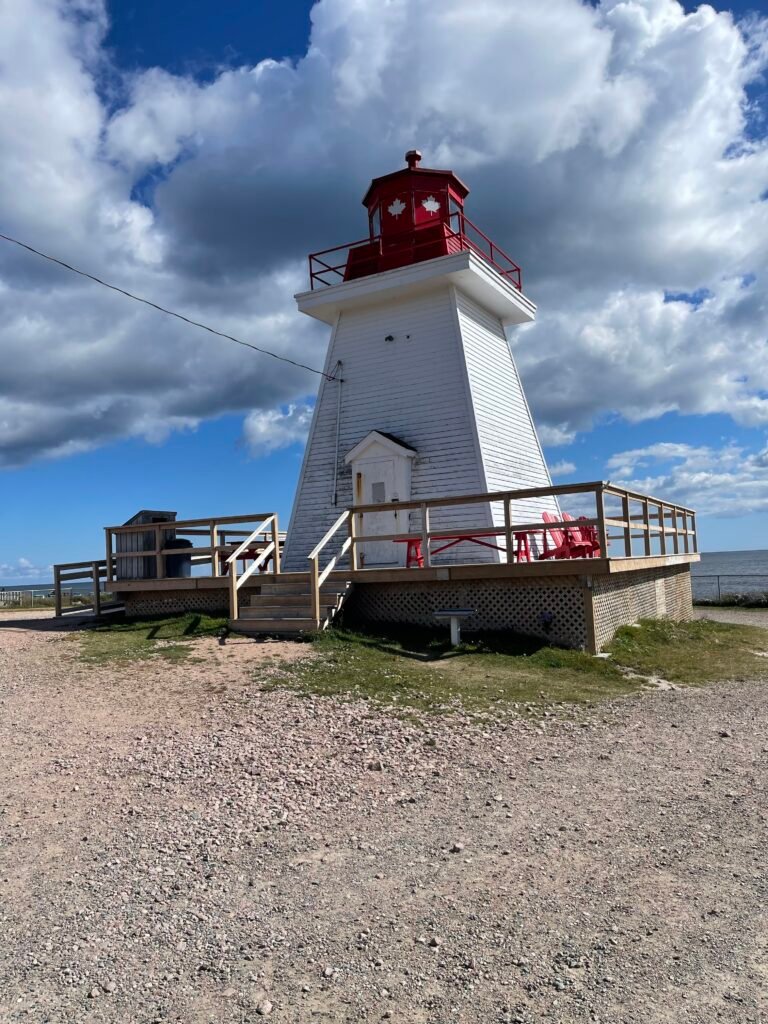
Neil Harbor lighthouse
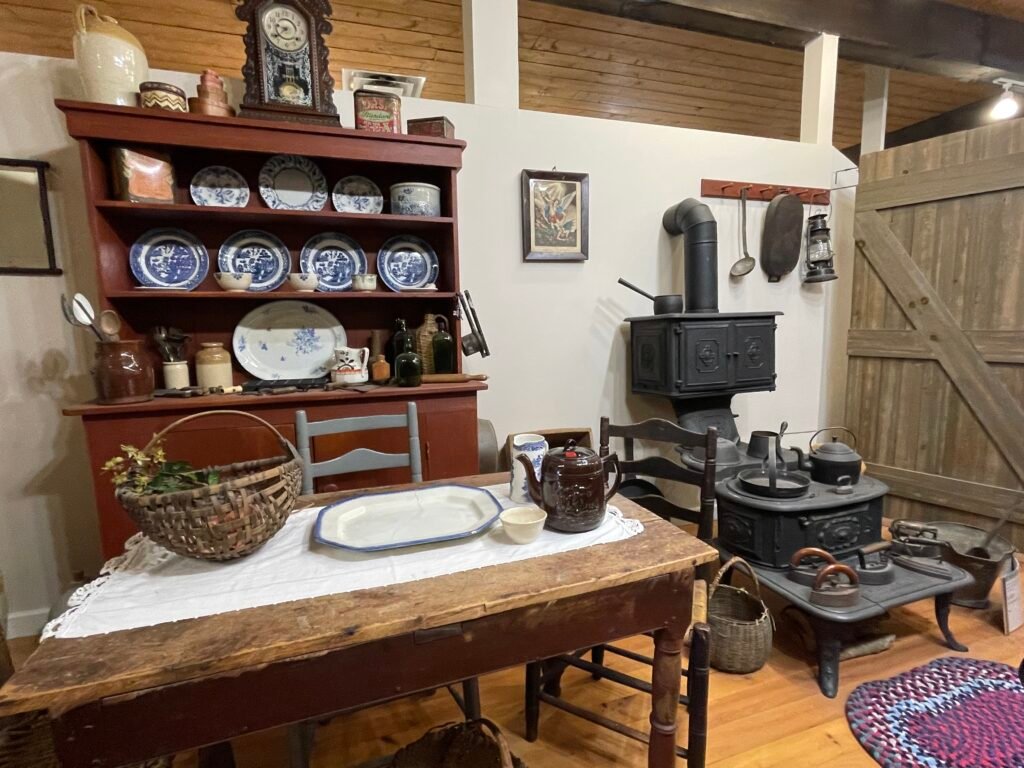
Some of the artifacts amassed by Marguerite Gallant
Below are some of the hooked rugs on display.
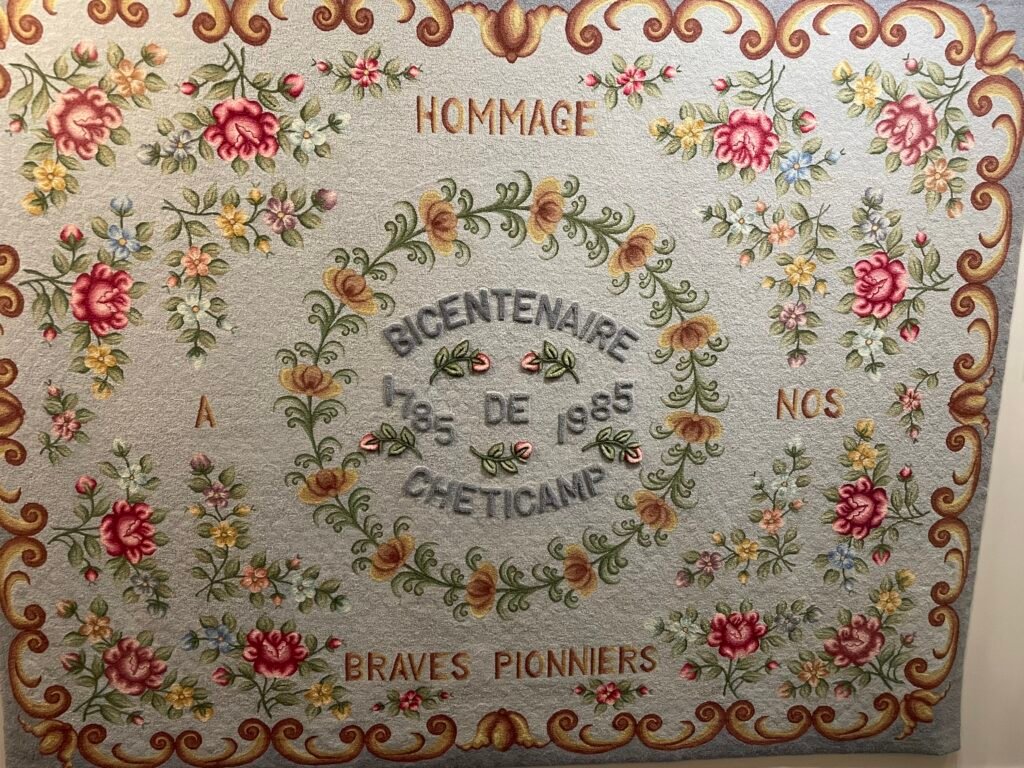
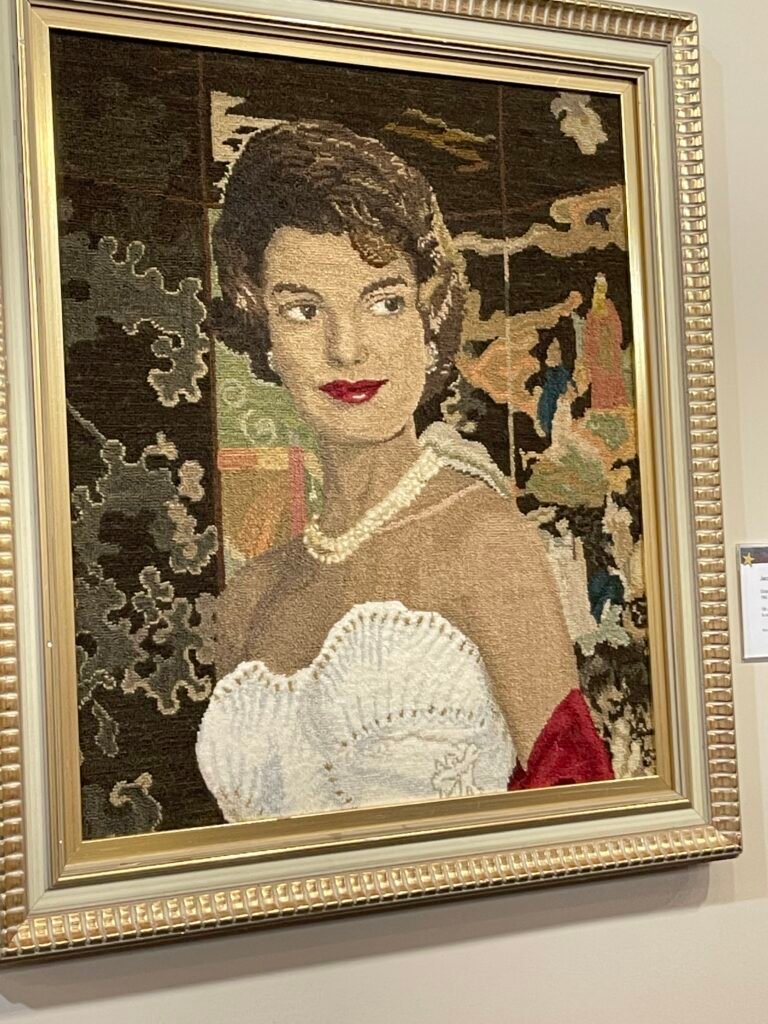
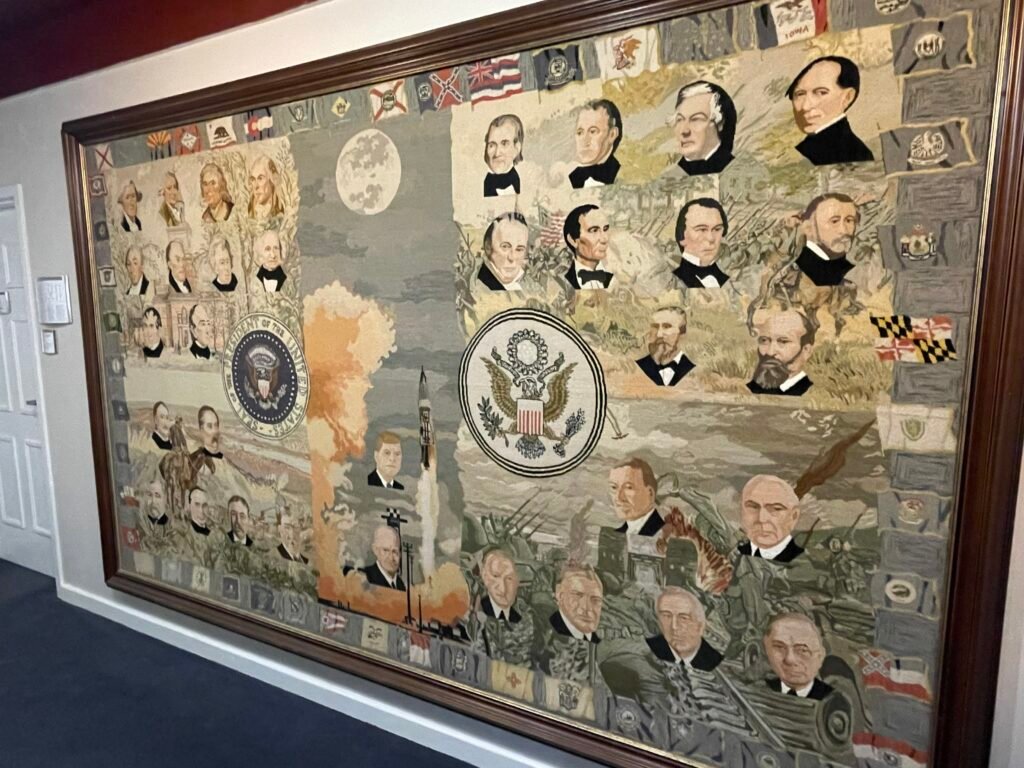
US presidents through John F. Kennedy
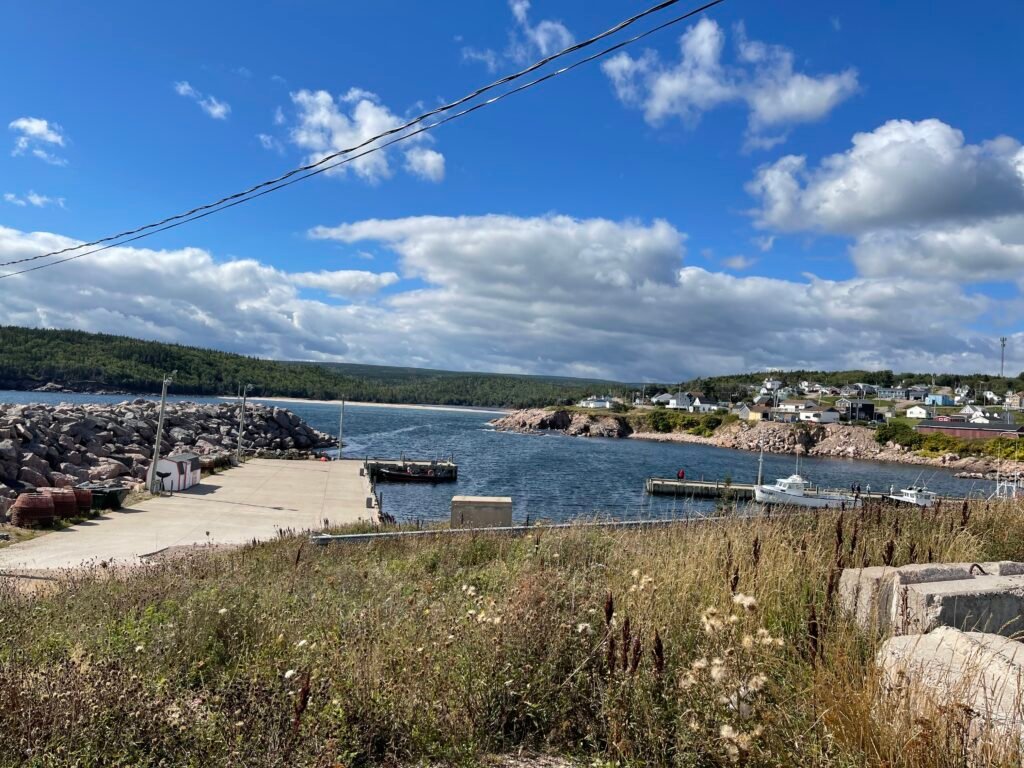
Beautiful seaside scenery

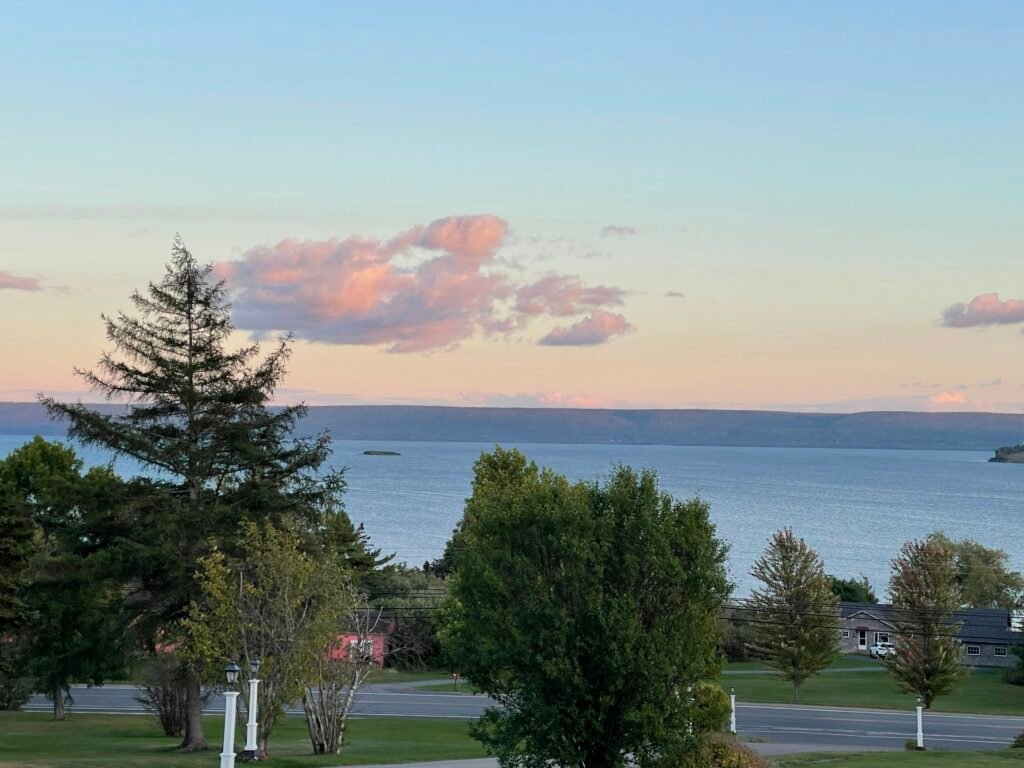
Sunset just beginning over the water as we enjoyed dinner.


